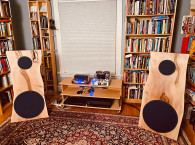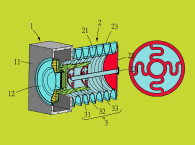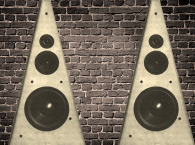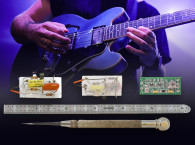
- on Project Articles
- Article
DSP Assisted Reflex: The New Way to Design a Loudspeaker
For decades, we would design a vented box by entering the Thiele-Small (T-S) parameters of the driver into a box design software program, and choose a fixed alignment that suited our needs. Then, we would tweak the details and build the box. However, there is another solution.
The 80/20 DSP approach is:
1. Choose your box volume first, which determines neither bandwidth nor maximum output, but efficiency in the lowest octave. Bigger box = more SPL for less power. Even a small box can be tuned very low, if your budget and your woofer can handle the power.
2. Choose your tuning frequency fb. This sets the band where your Passive Radiator is going to add 10 dB of “displacement gain.” You can set that frequency high, favoring high output (as with the Bose 802) or tune it lower for deeper bass (as with the Bose 901). But there is a tradeoff:
- One octave bass extension (fnew = 0.5fold) costs you 12 dB in maximum output
- Half octave bass extension (fnew = 0.707fold) costs you 6 dB in maximum output
- Each 20% reduction in frequency (1/3 octave, i.e., 50 Hz to 40 Hz, or 40 Hz to 32 Hz) costs you 3 dB in maximum output.
3. Set your DSP EQ with maximum boost at fb and at least 14 dB of low frequency protection at 0.707 fb. Apply notch filters to solve other problems as necessary.
To harness the full strength of today’s high Xmax woofers, you must use a large diameter and a long port or a passive radiator that can handle three times the air displacement of your woofer! If you follow these rules, the 80/20 DSP Assisted Reflex will have up to 10 dB higher maximum output than a sealed system, and more output than old-school reflex designs, with almost no disadvantages.
Figure 13: A pair of speakers generates more than 100 dB SPL at 55 Hz in a 12’ × 19’ room. The system has no crossover and, as you can see from the extraordinary clean impulse response, the phase accuracy is superior to 99% of all two- and three-way speakers.






